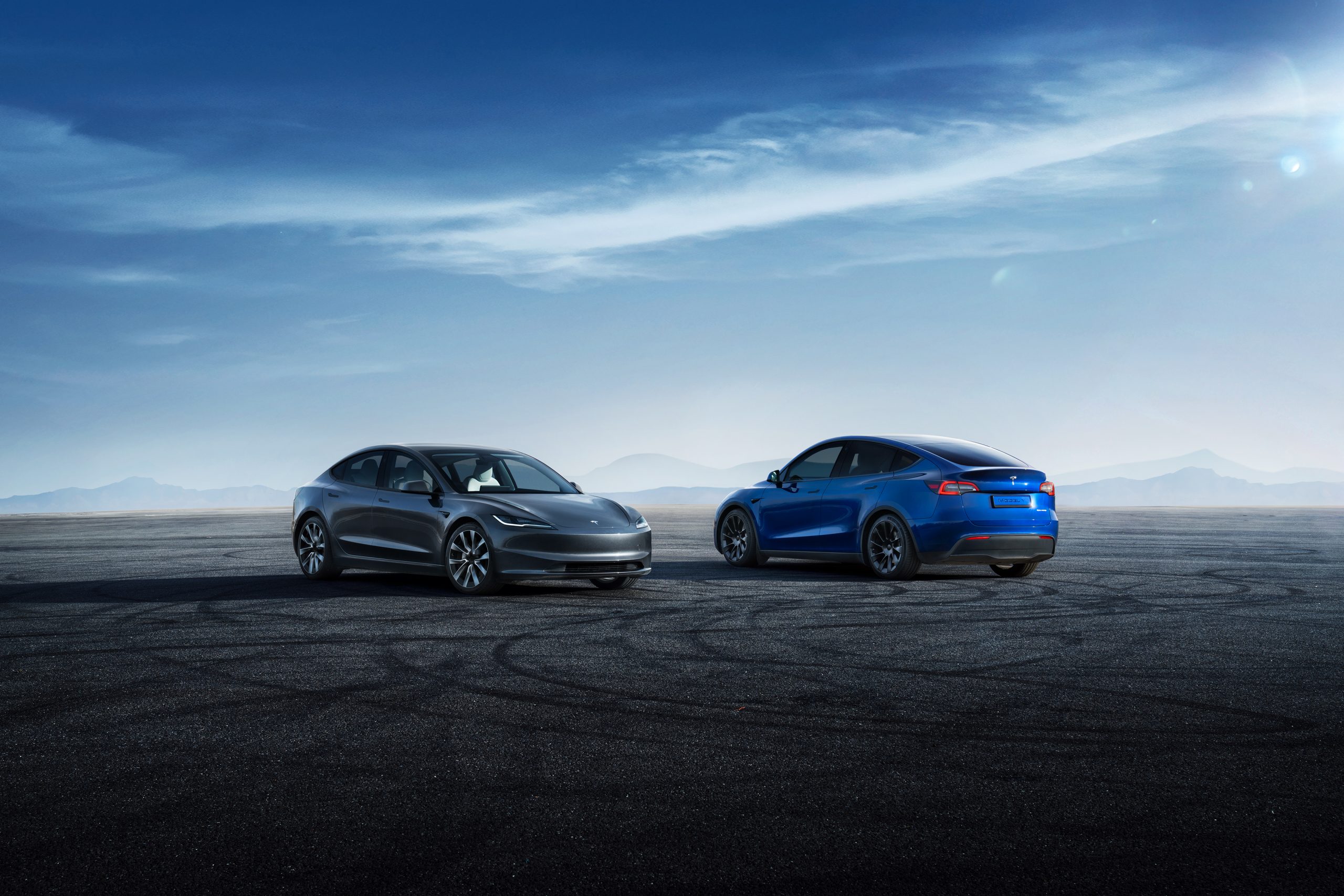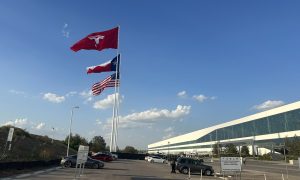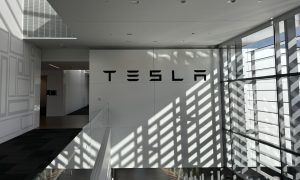

News
Here’s how many EVs were sold in the U.S. last year by model
Tesla remained the top electric vehicle (EV) seller in the U.S. by a wide margin in 2024, gaining almost half of the emerging market and outselling the next several models combined with its own lineup, as shown in the latest data.
Cox Automotive released its Q4 and 2024 EV sales report last week, showing estimates of how many EVs were sold by brand and model, and highlighting how many units Tesla is delivering compared to other automakers for another year in a row. Total EV sales in the U.S. grew 7.3 percent year over year, amounting to a little over 1.3 million units—of which Tesla sold 633,762, or 48.7 percent.
Tesla’s total sales amounted to more than double those of the rest of the top 10 EVs sold in 2024, a list which was comprised of vehicles from General Motors (GM), Hyundai, Ford, and Rivian.
The Model Y and Model 3 were the top two EVs sold in 2024, with 372,613 and 189,903 units, respectively, as followed by the Ford Mustang Mach-E (51,745), the Hyundai Ioniq 5 (44,400), and the Cybertruck (38,965). By comparison, Tesla’s top three models outsold the rest of the top 10 EVs, which totaled 246,882, made up of the Ford F-150 Lightning, the Honda Prologue, the Chevy Equinox, the Cadillac Lyriq, and the Rivian R1S. The rest of the industry’s EVs combined made up 667,321 units, beating out Tesla’s total sales by just 33,559 units.
READ MORE ON U.S. EV MARKET: Tesla dominated the top 10 best-selling EVs in the U.S. in 2023
You can see nearly all the EV models sold in the U.S. below, with the Tesla Model X and Model S landing in the 15th and 24th spots, respectively.
EV models sold in the U.S. in 2024
- Tesla Model Y: 372,613
- Tesla Model 3: 189,903
- Ford Mustang Mach-E: 51,745
- Hyundai Ioniq 5: 44,400
- Tesla Cybertruck: 38,965
- Ford F-150 Lightning: 33,510
- Honda Prologue: 33,017
- Chevy Equinox EV: 28,874
- Cadillac Lyriq: 28,402
- Rivian R1S: 26,934
- BMW i4: 23,403
- Chevy Blazer EV: 23,115
- Kia EV9: 22,017
- Kia EV6: 21,715
- Tesla Model X: 19,855
- Nissan Ariya: 19,798
- Toyota BZ4X: 18,570
- Volkswagen ID.4: 17,021
- BMW iX: 15,383
- GMC Hummer Truck/SUV: 13,993
- Rivian EDV500/700: 13,423
- Ford E-Transit: 12,610
- Subaru Solterra: 12,447
- Tesla Model S: 12,426
- Kia Niro: 12,367
- Hyundai Ioniq 6: 12,264
- Mercedes EQE: 11,660
- Audi Q4 e-tron: 11,356
- Nissan Leaf: 11,226
- Rivian R1T: 11,085
- Lexus RZ: 9,697
- Mercedes EQB: 8,885
- BMW i5: 8,763
- Chevy Bolt EV/EUV: 8,627
- Audi Q8 e-tron: 7,936
- Chevy Silverado EV: 7,428
- Acura ZDX: 7,391
- Mercedes EQS: 6,963
- Hyundai Kona EV: 5,063
- Porsche Taycan: 4,747
- BMW i7: 3,431
- Jaguar I-Pace: 3,304
- Mini Cooper: 3,118
- Volvo XC40: 2,995
- Genesis GV70: 2,976
- Audi e-tron: 2,894
- Genesis GV60: 2,866
- GMC Sierra EV: 1,788
- Porsche Macan: 1,739
- Brightdrop Zevo 600/400: 1,529
- Volvo C40: 1,420
- Volkswagen ID.Buzz: 1,162
- Audi Q6 e-tron: 966
- Fiat 500e: 929
- Volvo EX90: 749
- Cadillac Escalade EV: 670
- Mini Countryman: 549
- Mercedes G-Class: 455
- Genesis G80: 397
- Jeep Wagoneer: 231
- Volvo EX30: 229
- Mercedes E-Sprinter: 191
*Additional EV Models: 27,089
*At the time of writing, Cox has not yet responded to Teslarati‘s requests for comment on which models make up this figure, or on whether the figure includes Lucid, Polestar, or other brands that were omitted from the data.
Top 10 BEV sellers in the U.S. in 2024
- Tesla: 633,762
- GM: 112,897 (including Chevy, Cadillac and GMC)
- Ford: 97,865
- Hyundai: 61,727
- Kia: 56,099
- Rivian: 51,442
- Honda: 33,017
- Nissan: 31,024
- Mercedes-Benz: 28,154
- Audi: 23,152
You can see the full Cox Automotive spreadsheet on Q4 and 2024 U.S. EV sales here.
What are your thoughts? Let me know at zach@teslarati.com, find me on X at @zacharyvisconti, or send us tips at tips@teslarati.com.
Tesla outsold this luxury brand globally for the first time in 2024
Need accessories for your Tesla? Check out the Teslarati Marketplace:
News
Tesla begins Robotaxi certification push in Arizona: report
Tesla seems serious about expanding its Robotaxi service to several states in the coming months.

Tesla has initiated discussions with Arizona transportation regulators to certify its driverless Robotaxi service in the state, as per a recent report from Bloomberg News. The move follows Tesla’s launch of its Robotaxi pilot program in Austin, Texas, as well as CEO Elon Musk’s recent comments about the service’s expansion in the Bay Area.
The Arizona Department of Transportation confirmed to Bloomberg that Tesla has reached out to begin the certification process for autonomous ride-sharing operations in the state. While details remain limited, the outreach suggests that Tesla is serious about expanding its driverless Robotaxi service to several territories in the coming months.
The Arizona development comes as Tesla prepares to expand its service area in Austin this weekend, as per CEO Elon Musk in a post on X. Musk also stated that Tesla is targeting the San Francisco Bay Area as its next major market, with a potential launch “in a month or two,” pending regulatory approvals.
Tesla first launched its autonomous ride-hailing program on June 22 in Austin with a small fleet of Model Y vehicles, accompanied by a Tesla employee in the passenger seat to monitor safety. While still classified as a test, Musk has said the program will expand to about 1,000 vehicles in the coming months. Tesla will later upgrade its Robotaxi fleet with the Cyercab, a two-seater that is designed without a steering wheel.
Sightings of Cybercab castings around the Giga Texas complex suggests that Tesla may be ramping the initial trial production of the self-driving two-seater. Tesla, for its part, has noted in the past that volume production of the Cybercab is expected to start sometime next year.
In California, Tesla has already applied for a transportation charter-party carrier permit from the state’s Public Utilities Commission. The company is reportedly taking a phased approach to operating in California, with the Robotaxi service starting with pre-arranged rides for employees in vehicles with safety drivers.
News
Tesla sets November 6 date for 2025 Annual Shareholder Meeting
The automaker announced the date on Thursday in a Form 8-K.

Tesla has scheduled its 2025 annual shareholder meeting for November 6, addressing investor concerns that the company was nearing a legal deadline to hold the event.
The automaker announced the date on Thursday in a Form 8-K submitted to the United States Securities and Exchange Commission (SEC). The company also listed a new proposal submission deadline of July 31 for items to be included in the proxy statement.
Tesla’s announcement followed calls from a group of 27 shareholders, including the leaders of large public pension funds, which urged Tesla’s board to formally set the meeting date, as noted in a report from The Wall Street Journal.
The group noted that under Texas law, where Tesla is now incorporated, companies must hold annual meetings within 13 months of the last one if requested by shareholders. Tesla’s previous annual shareholder meeting was held on June 13, 2024, which placed the July 13 deadline in focus.
Tesla originally stated in its 2024 annual report that it would file its proxy statement by the end of April. However, an amended filing on April 30 indicated that the Board of Directors had not yet finalized a meeting date, at least at the time.
The April filing also confirmed that Tesla’s board had formed a special committee to evaluate certain matters related to CEO Elon Musk’s compensation plan. Musk’s CEO performance award remains at the center of a lengthy legal dispute in Delaware, Tesla’s former state of incorporation.
Due to the aftermath of Musk’s legal dispute about his compensation plan in Delaware, he has not been paid for his work at Tesla for several years. Musk, for his part, has noted that he is more concerned about his voting stake in Tesla than his actual salary.
At last year’s annual meeting, TSLA shareholders voted to reapprove Elon Musk’s compensation plan and ratified Tesla’s decision to relocate its legal domicile from Delaware to Texas.
Elon Musk
Grok coming to Tesla vehicles next week “at the latest:” Elon Musk
Grok’s rollout to Tesla vehicles is expected to begin next week at the latest.

Elon Musk announced on Thursday that Grok, the large language model developed by his startup xAI, will soon be available in Tesla vehicles. Grok’s rollout to Tesla vehicles is expected to begin next week at the latest, further deepening the ties between the two Elon Musk-led companies.
Tesla–xAI synergy
Musk confirmed the news on X shortly after livestreaming the release of Grok 4, xAI’s latest large language model. “Grok is coming to Tesla vehicles very soon. Next week at the latest,” Musk wrote in a post on social media platform X.
During the livestream, Musk and several members of the xAI team highlighted several upgrades to Grok 4’s voice capabilities and performance metrics, positioning the LLM as competitive with top-tier models from OpenAI and Google.
The in-vehicle integration of Grok marks a new chapter in Tesla’s AI development. While Tesla has long relied on in-house systems for autonomous driving and energy optimization, Grok’s integration would introduce conversational AI directly into its vehicles’ user experience. This integration could potentially improve customer interaction inside Tesla vehicles.
xAI and Tesla’s collaborative footprint
Grok’s upcoming rollout to Tesla vehicles adds to a growing business relationship between Tesla and xAI. Earlier this year, Tesla disclosed that it generated $198.3 million in revenue from commercial, consulting, and support agreements with xAI, as noted in a report from Bloomberg News. A large portion of that amount, however, came from the sale of Megapack energy storage systems to the artificial intelligence startup.
In July 2023, Musk polled X users about whether Tesla should invest $5 billion in xAI. While no formal investment has been made so far, 68% of poll participants voted yes, and Musk has since stated that the idea would be discussed with Tesla’s board.
-

 Elon Musk1 week ago
Elon Musk1 week agoTesla investors will be shocked by Jim Cramer’s latest assessment
-

 Elon Musk3 days ago
Elon Musk3 days agoElon Musk confirms Grok 4 launch on July 9 with livestream event
-

 Elon Musk14 hours ago
Elon Musk14 hours agoxAI launches Grok 4 with new $300/month SuperGrok Heavy subscription
-

 News7 days ago
News7 days agoTesla Model 3 ranks as the safest new car in Europe for 2025, per Euro NCAP tests
-

 Elon Musk2 weeks ago
Elon Musk2 weeks agoA Tesla just delivered itself to a customer autonomously, Elon Musk confirms
-

 Elon Musk1 week ago
Elon Musk1 week agoxAI’s Memphis data center receives air permit despite community criticism
-

 Elon Musk2 weeks ago
Elon Musk2 weeks agoTesla’s Omead Afshar, known as Elon Musk’s right-hand man, leaves company: reports
-

 News2 weeks ago
News2 weeks agoXiaomi CEO congratulates Tesla on first FSD delivery: “We have to continue learning!”
















